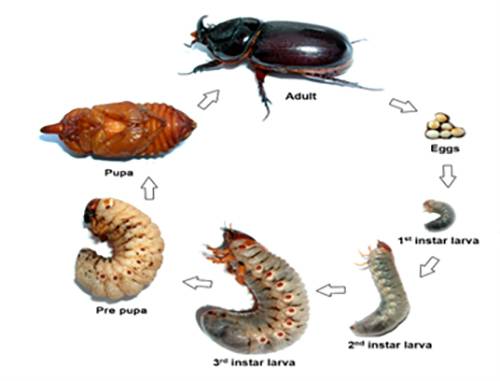Ecology
The rhinoceros beetle, Oryctes rhinoceros, is a Southeast Asian native that was accidentally introduced to the South Pacific regions such as American Samoa, Fiji, Mayotte, Palau, Papua New Guinea, Reunion, Samoa, Tokelau, Tonga, Wallis, and Futuna along with import materials viz timber, habitat materials, and nursery commerce.
The rhinoceros beetle has been a major pest of oil palms since the 1990s, and it can be found in all of Malaysia’s states.
The rhinoceros beetle’s entire life cycle spans between four and nine months from egg to adult, depending on environmental factors such as humidity, climatic conditions, and food availability.
The adult rhinoceros beetle has a cephalic horn and black shiny body that is 35-50 mm long and 20-23 mm in width. The male could be differentiated from the female by having a longer horn.
The females deposited about 70-100 yellowish-white eggs, which hatched into c-shape larvae after 8-12 days.
There are three larval instars, each of which takes 82 to 207 days to develop into pre-pupae. The diameter of the head capsules was used to distinguish each instar.
Causal
The introduction zero burning of old palms prior to the replanting. Rotten chipped oil palm in the replanting areas provides excellent breeding sites for the beetle.
The practice of underplanting, in which young seedlings were planted beneath poisoned standing old palms. Compared to the chipped trunks on the ground, the dead standing palm attracted substantially more beetles.
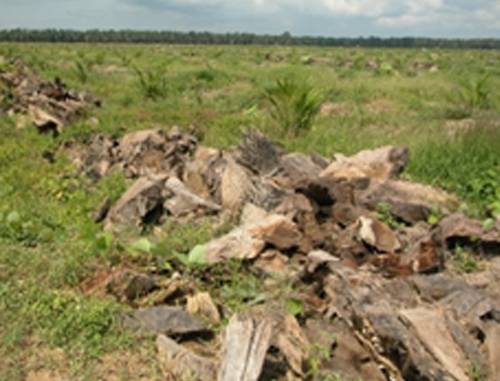
Symptoms
The damaged palms exhibited wedged or v-shaped leaves due to boring activity of the rhinoceros beetle.
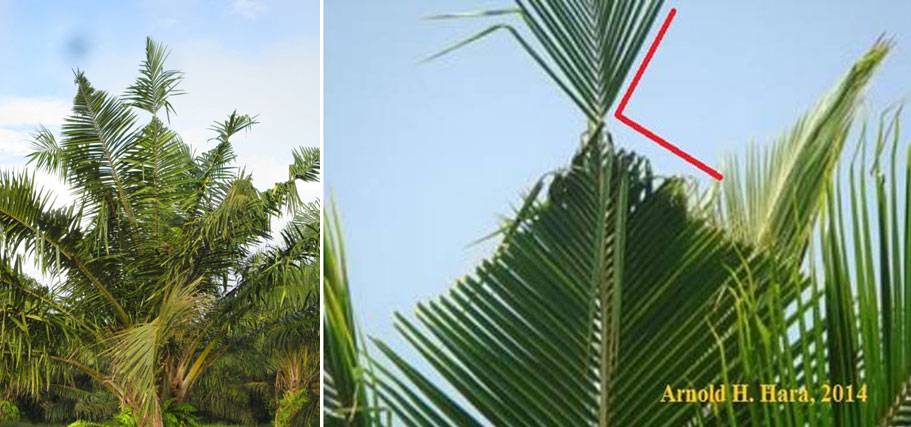
Control
Biological control
Metarhizium anisopliae was found to be a virulent entomopathogenic fungus against the rhinoceros beetle. Spraying the fungus solutions on the breeding locations was successful in killing up to 80% of the larvae.
Utilisation of insect-specific Oryctes Nudivirus (OrNV) used the adults as vectors to spread the virus to other healthy beetles.
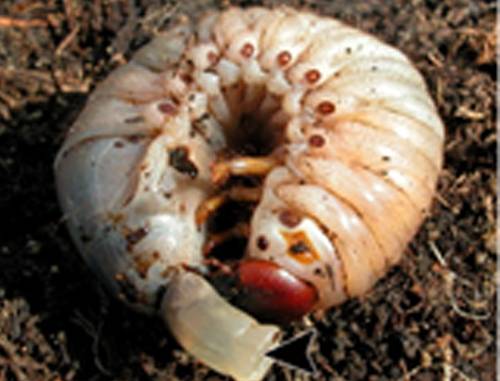
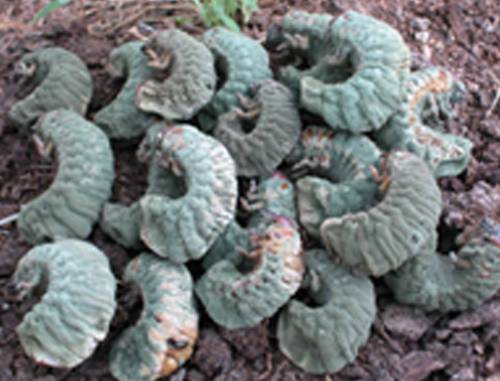
Chemical control
The most common pesticide is cypermethrin, which has been used to manage the rhinoceros beetle in both nurseries and plantations.

